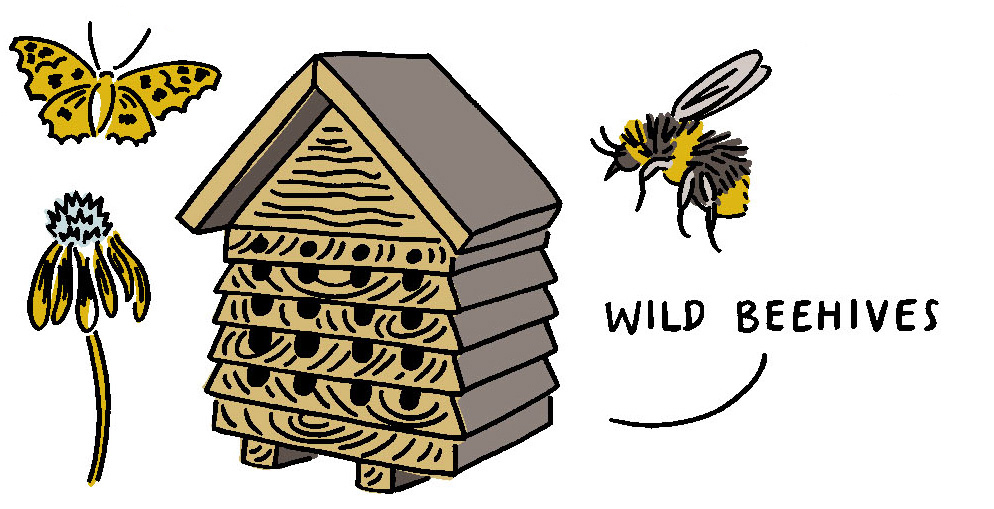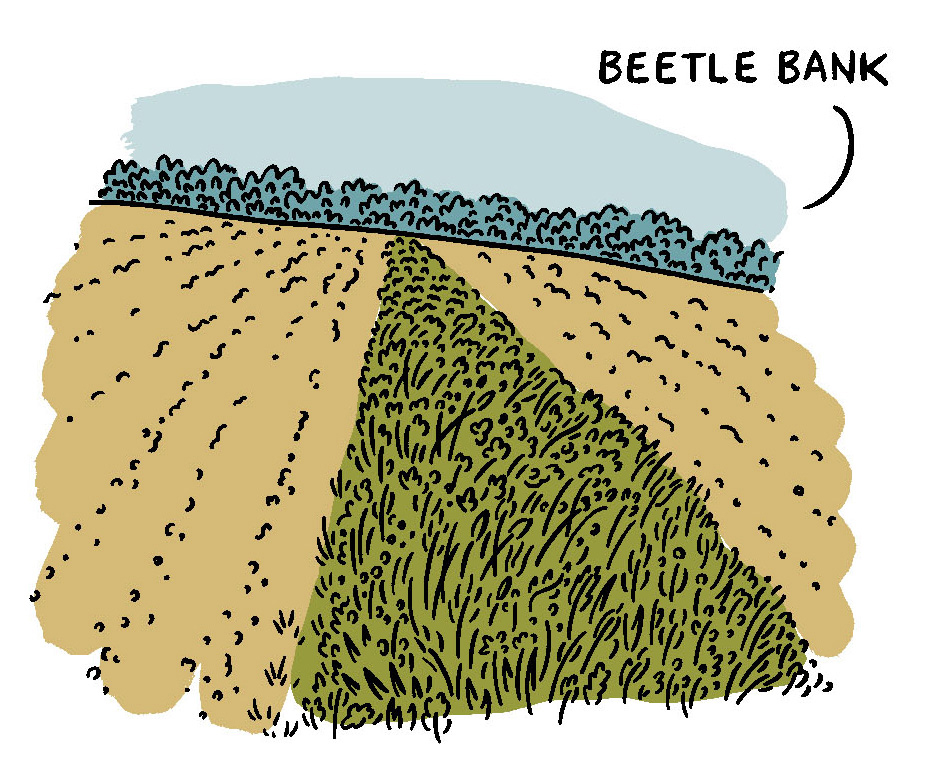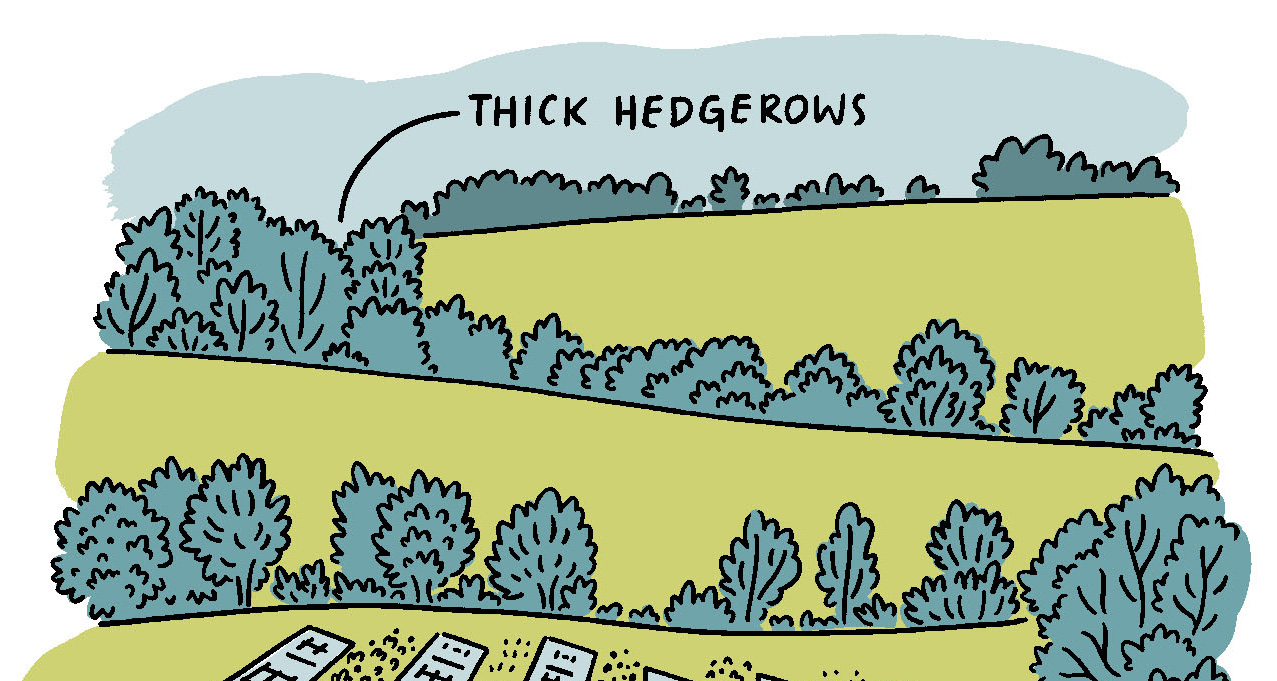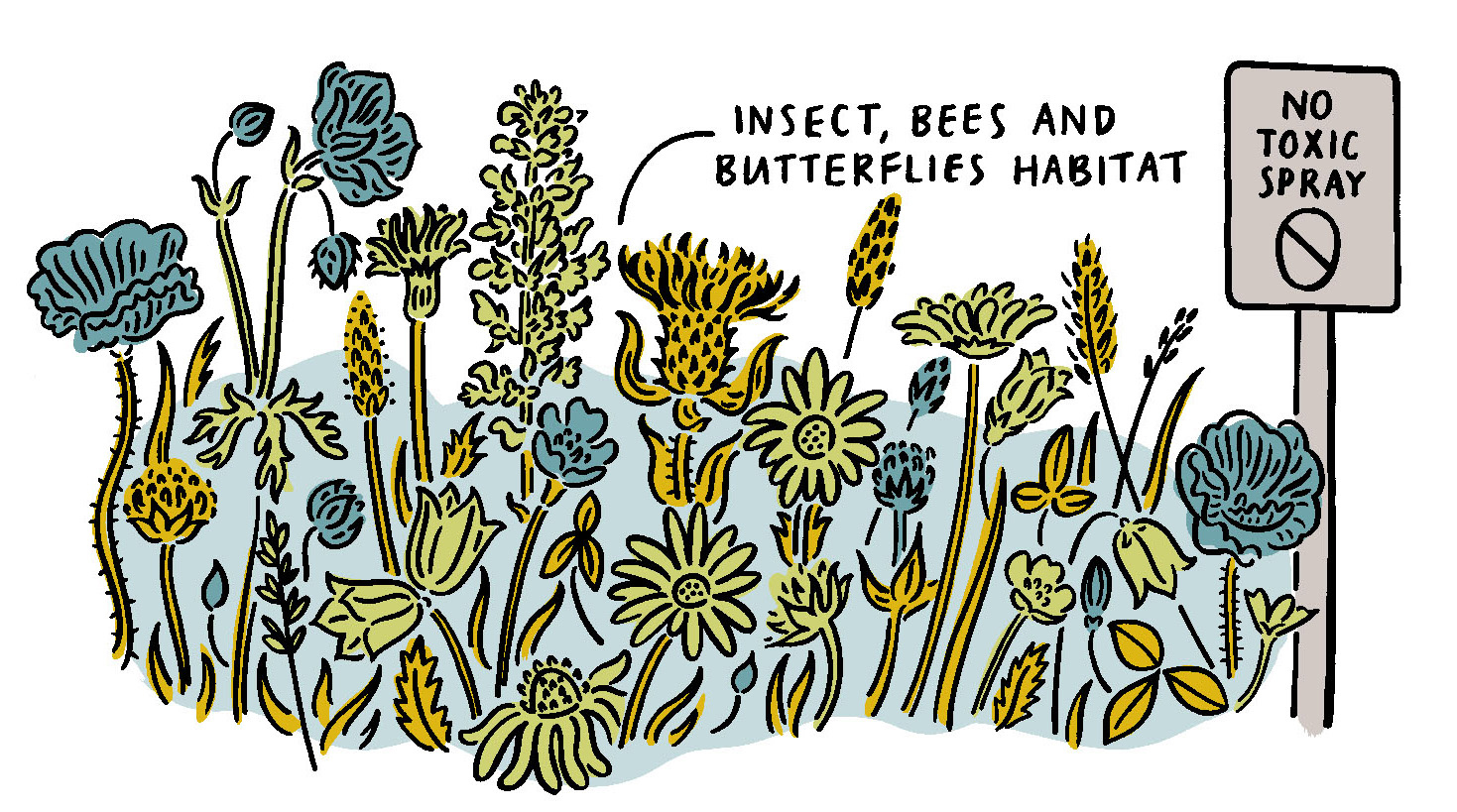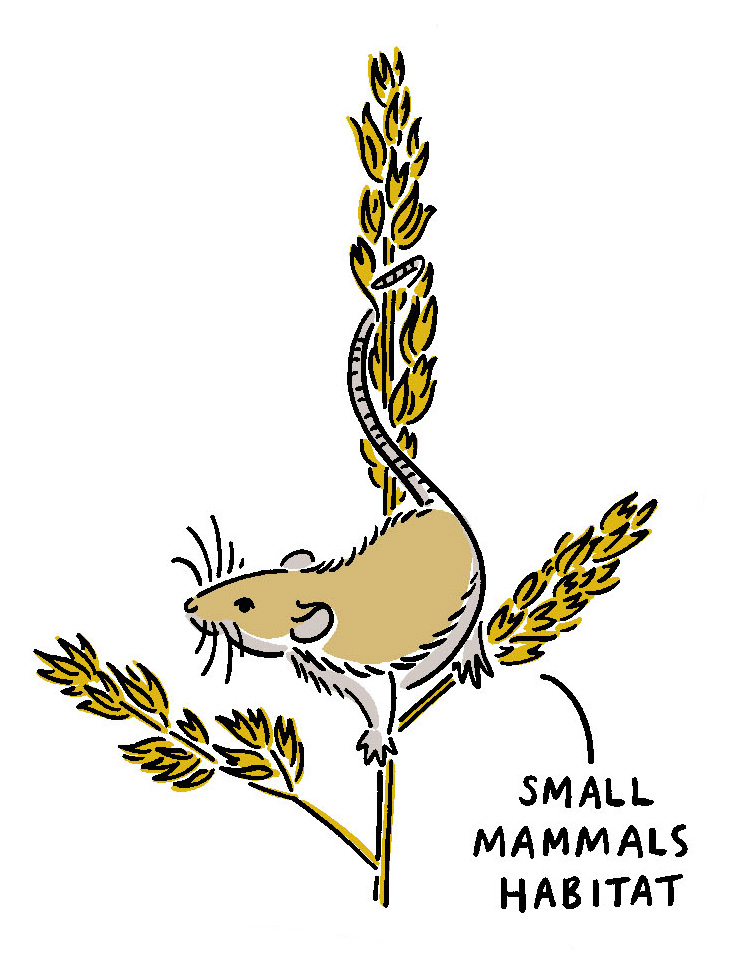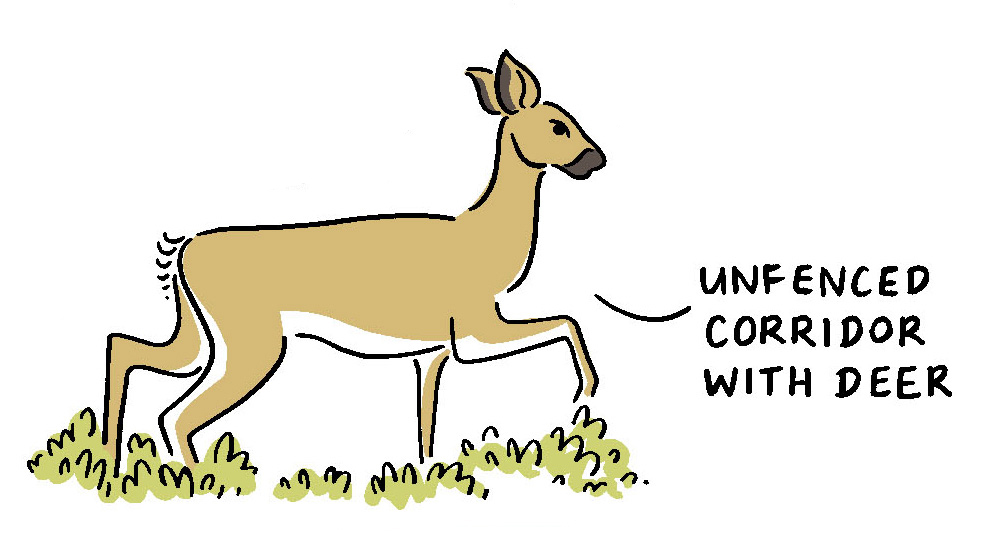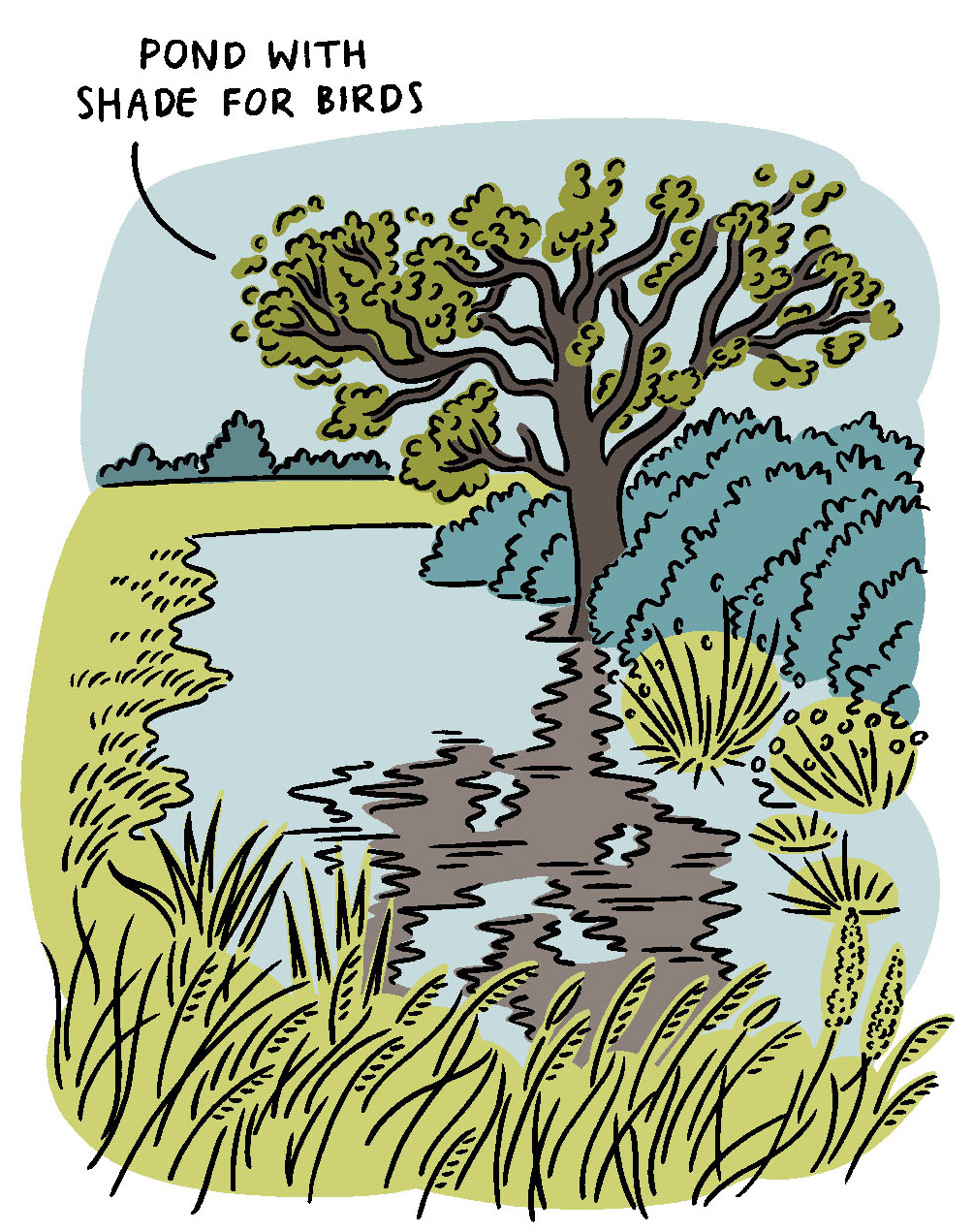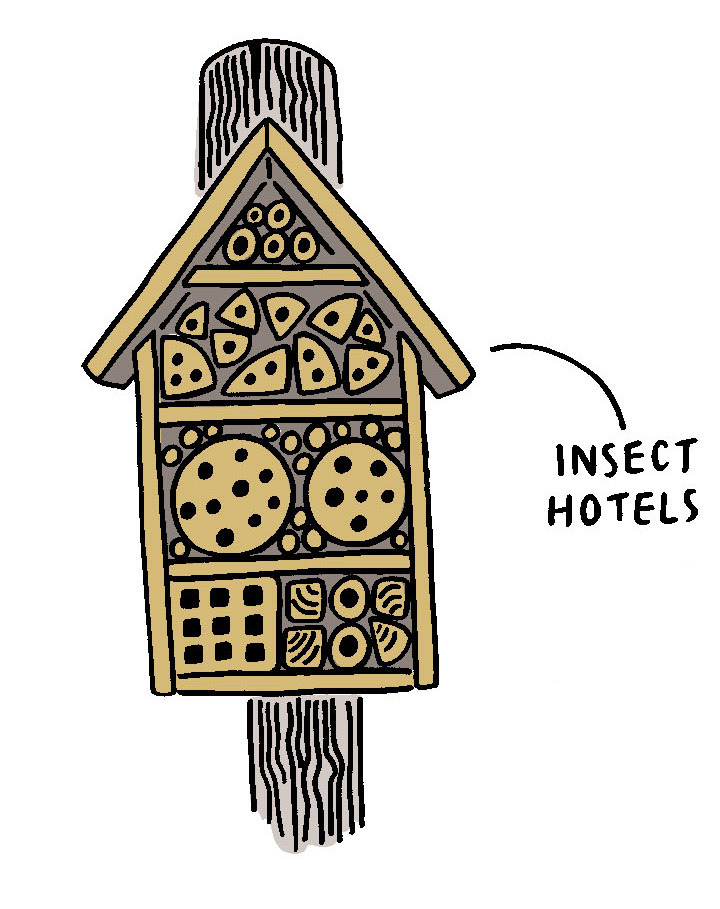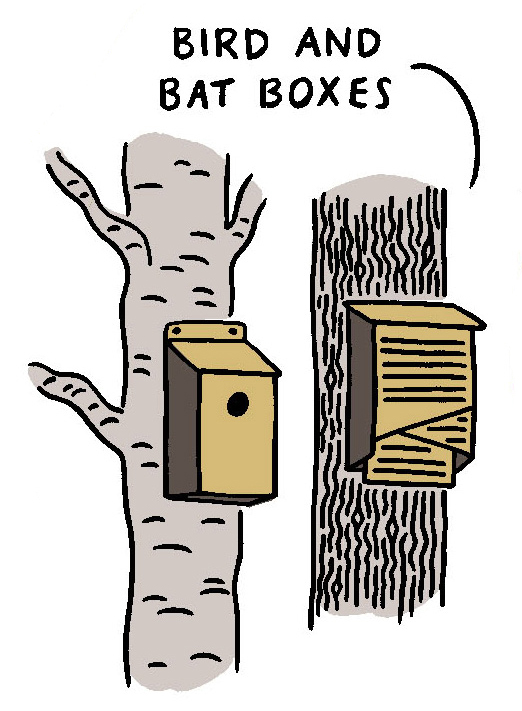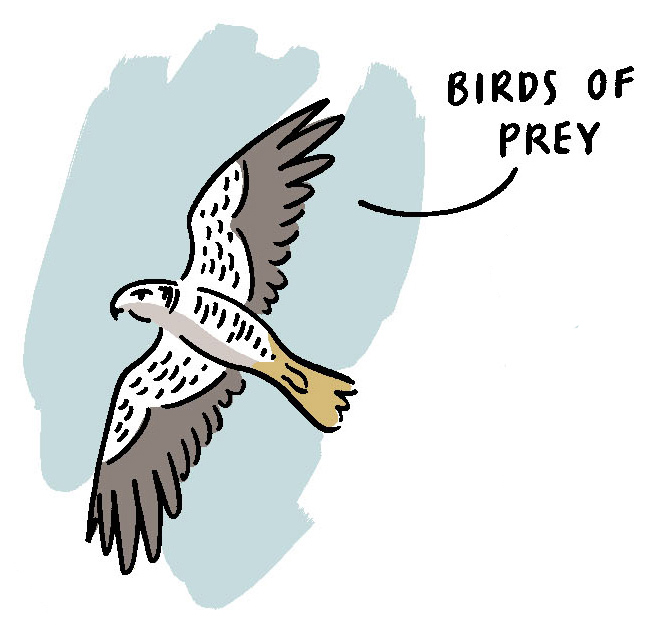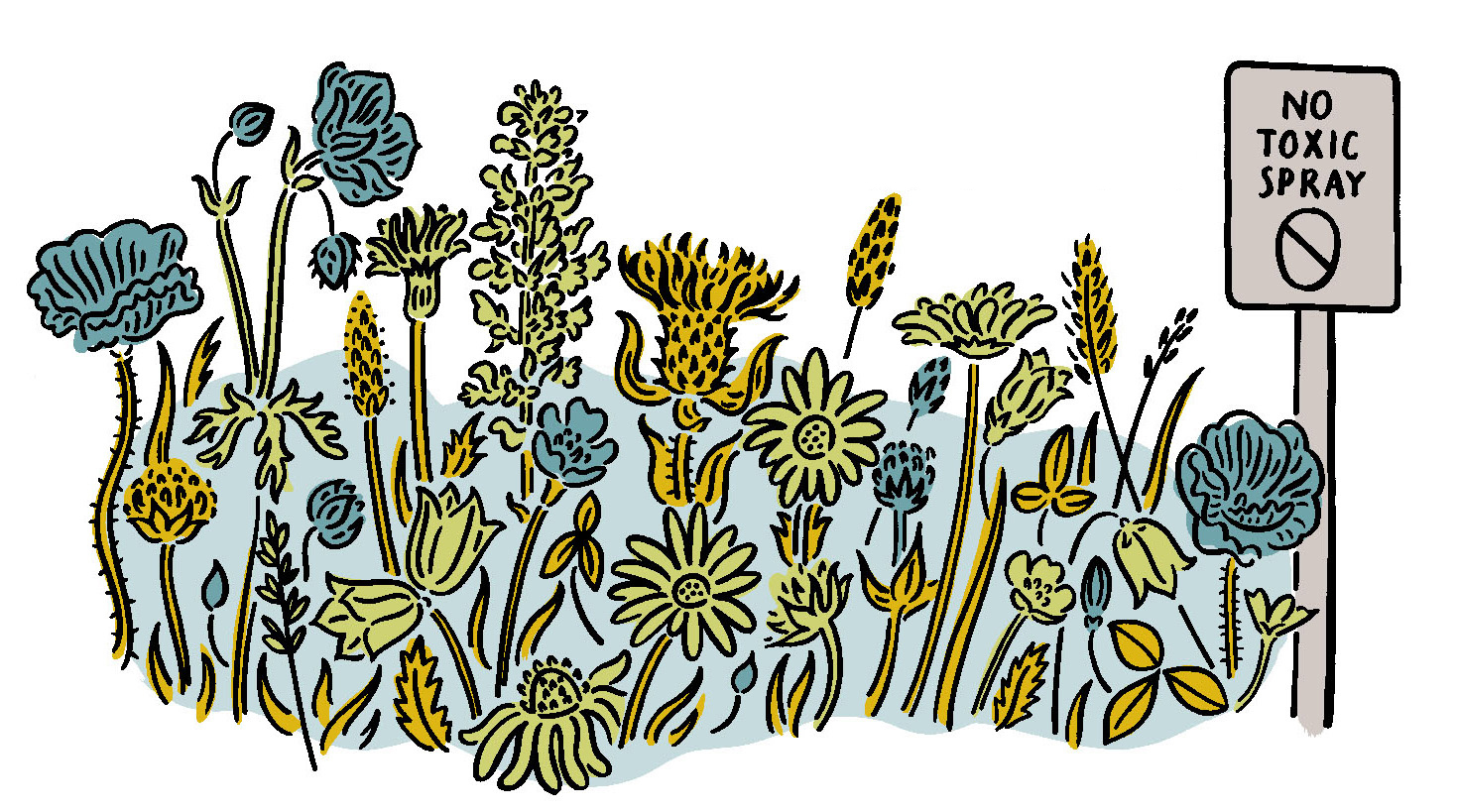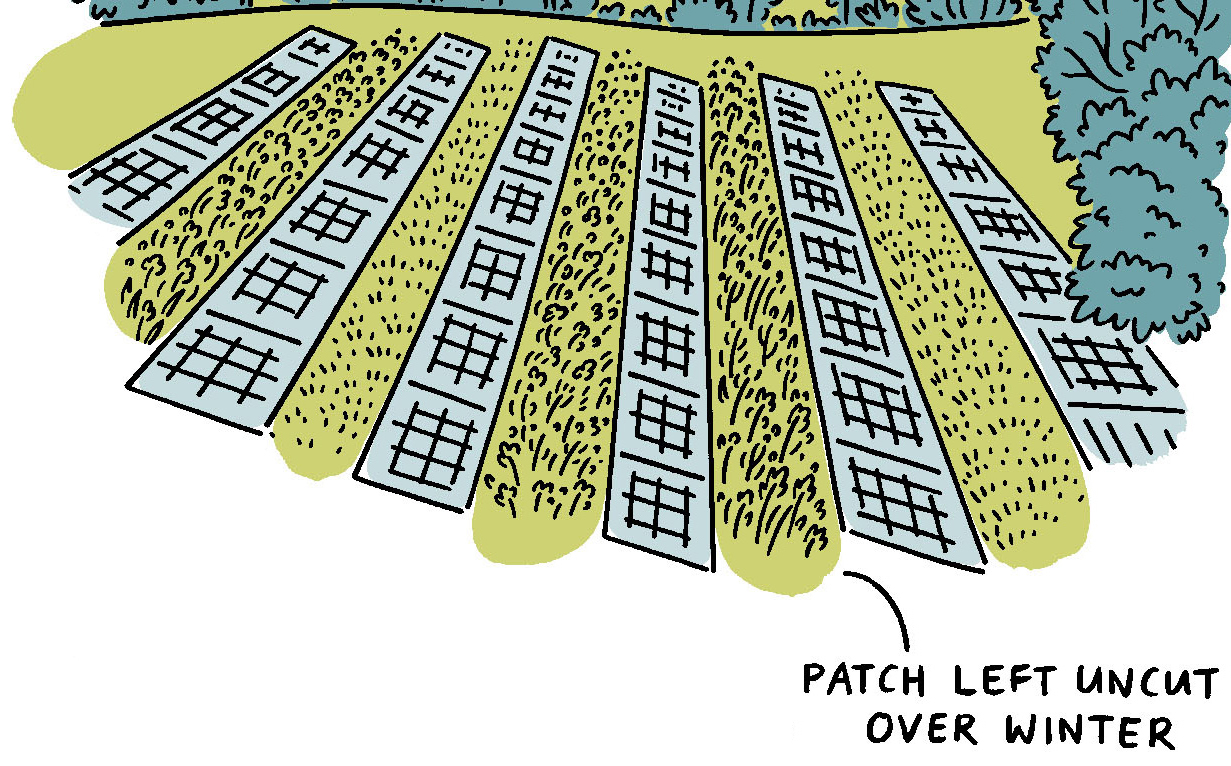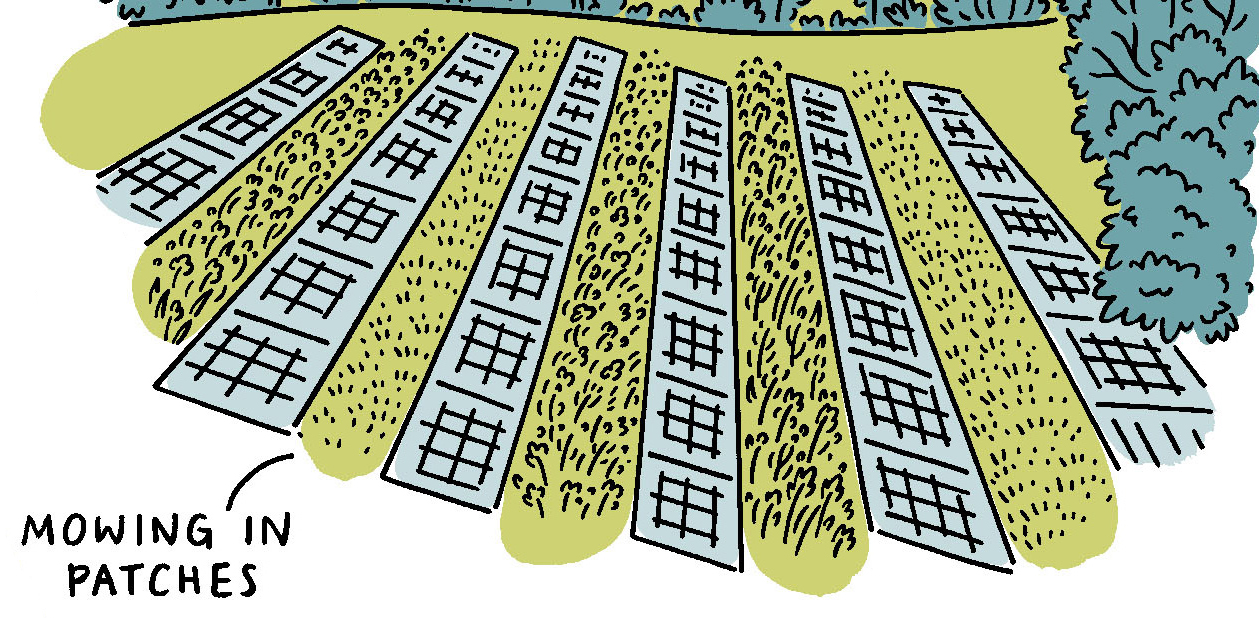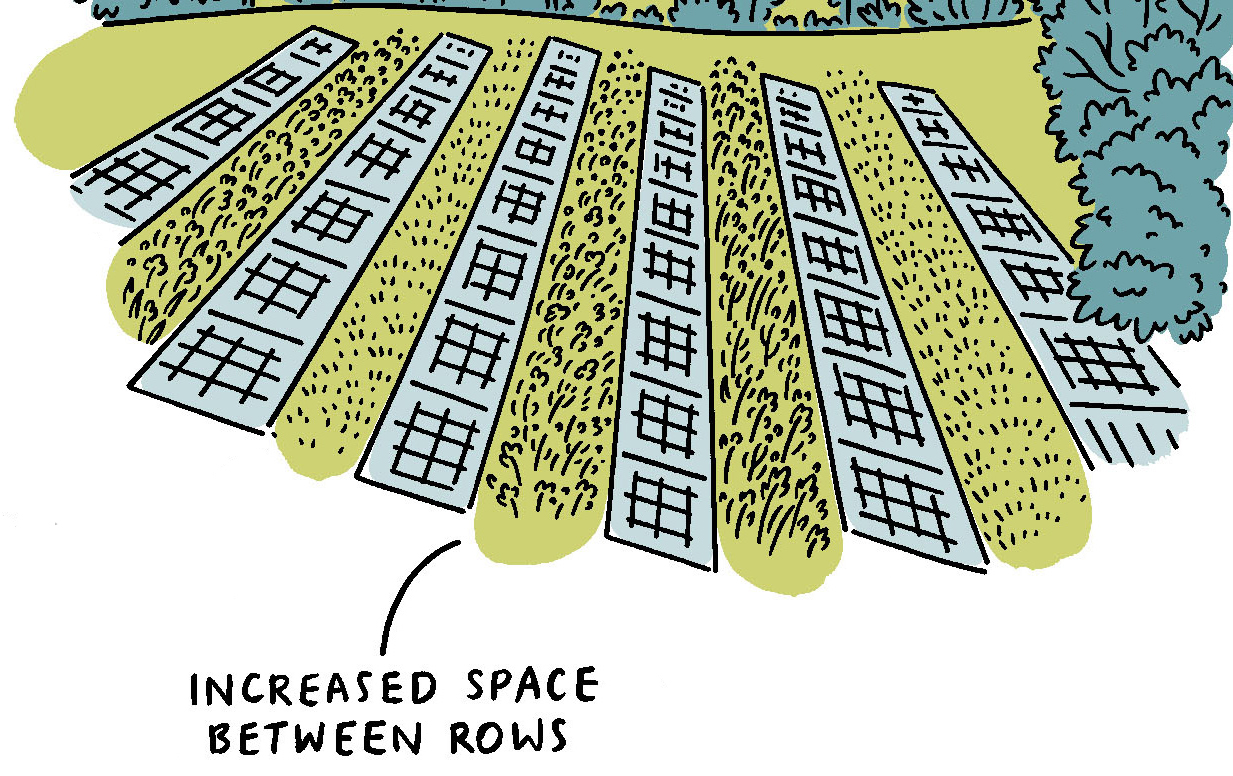Biodiversity
The biodiversity and climate crisis are strongly linked and their solutions are interrelated
The importance of biodiversity on solar farms is coming into sharper focus, due to the intersecting forces of sustainable finance and increasing regulatory requirements. These positive influences are changing the way the industry and the public view solar farms as they evolve into biodiversity hotspots that lead the recovery of nature. Click on the different descriptions in the image below to learn more about the biodiversity opportunities, from ponds to insect hotels and everything in-between.
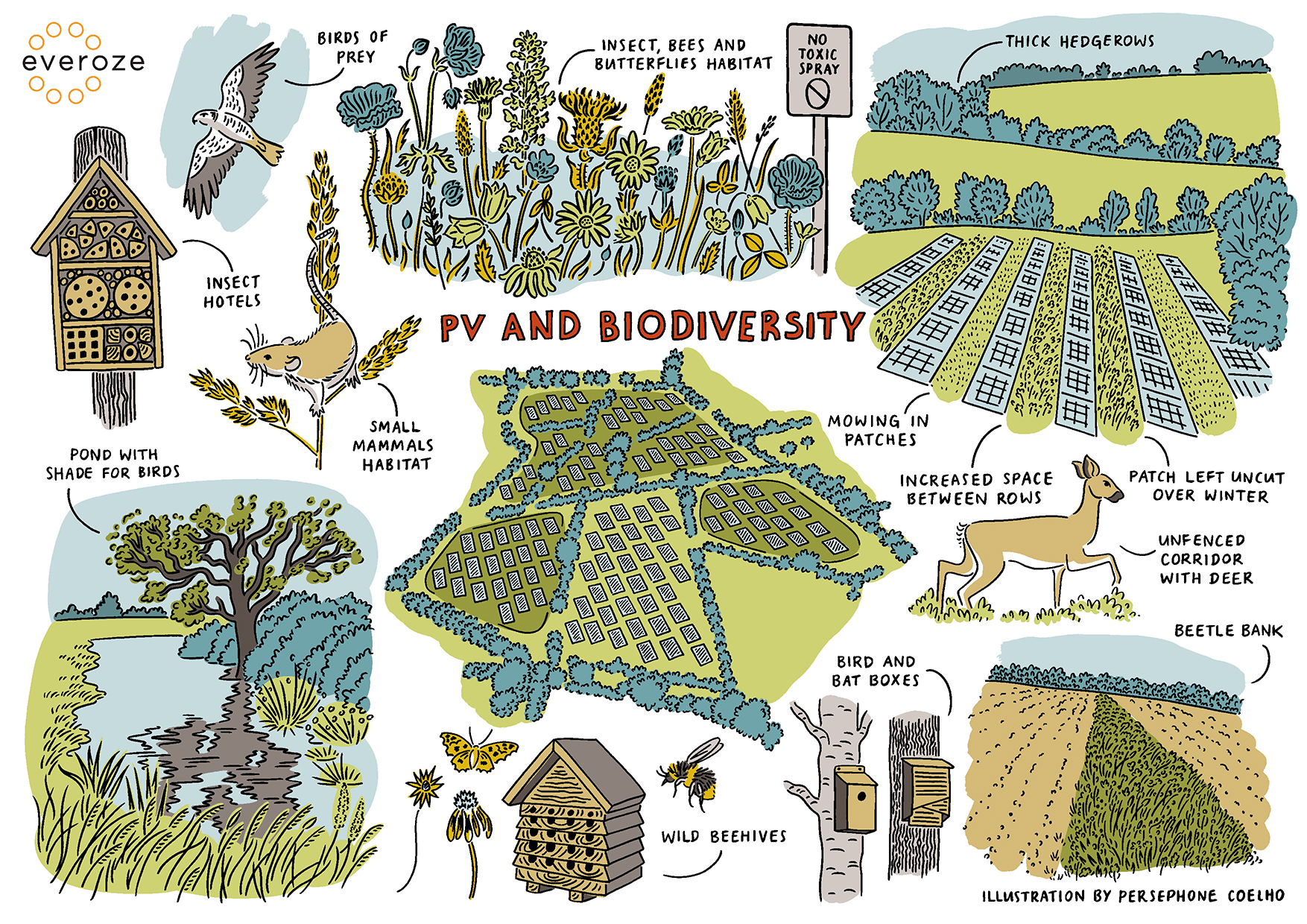
Numerous studies suggest that honeybees may compete with native pollinators where introduced as non-native insects. Hence the installation of wild beehives can support this declining species.
Beetle banks are simple, grass-sown raised strips providing habitat for both invertebrate predators of arable crop pests and other farmland wildlife. As simple, inexpensive features, beetle banks provide a means of dividing fields and enhancing biodiversity, while requiring minimal management.
Studies indicate that plant species richness decreases with increased distance from the hedgerow and that there is a greater abundance of invertebrates within the 3.5m-wide margins. Studies also show that a hedgerow landscape is well adapted to protect soil (regarding carbon storage and soil erosion) in the context of climate change.
Sown wildflower strips are increasingly being established in Europe for enhancing arthropod conservation and the provision of ecosystem services, including biotic pollination and natural pest control. Indeed grass land can be managed to increase the diversity of wild flowers. This has a knock on effect on the abundance of butterflies and lead to the creation of an entire ecosystem.
By installing mammal gates or wildlife friendly fences raised above the ground by 10cm corridors for small mammals can be created to ensure their continued and useful contribution to the local ecosystem.
For projects above 10 ha it is recommended to install an unfenced corridor for larger mammals. This is to improve opportunities for large mammals to cross and connect to other habitats.
Small constructed wetlands/ponds can lead to increased diversity of plants and invertebrates, including possible increases in water-dependent invertebrates, and they are potentially used by a range of bird species.
The improvement of habitat quality and reproductive success through the implementation of artificial breeding structures is one of the most widespread in situ conservation strategies applied to the recovery of declining wildlife populations.
A useful addition to any site. Possible functions for the animals include feeding, resting, rearing of young, mating or stop-over sites during migration.
Habitat creation across the ecosystem strengthens the food chain and benefits apex predators such as birds of prey.
Studies show that zones of reduced fertilizer, pesticide and herbicide applications resulted in increases to plant and animal biodiversity and soil health.
By not cutting back, shelter for insects and food for birds is provided during the coldest months.
To minimize adverse effects on meadow invertebrates (such as butterflies, ground beetles, orthopterans and spiders), diversifying mowing operations in time and space is often recommended.
Depending on the site location and geography it is recommended to adapt the spacing between the rows or the tilt, and take into account tracking and bifacial technology to allow for more sunlight to penetrate the space underneath the panels to spur biodiversity.
Actively increasing the biodiversity on renewable energy sites is an opportunity for developers and investors to increase their positive impact and comply with the latest biodiversity legislation such as the UK Environment Act and EU Biodiversity Strategy for 2030. Everoze provides our clients with joined up thinking that integrates biodiversity best practice with technical and commercial expertise to ensure your project will provide a return on investment and a return for nature.
Our experienced and knowledgeable consultants understand the industry, latest science and legislation and can ensure biodiversity is considered in all aspects of the project. We provide an enhanced focus on biodiversity impacts and risks during the due diligence process ensuring projects and portfolios are developed in line with best practice and legislation.
For more information on how we can help you boost the biodiversity of your renewable energy projects, contact us.


